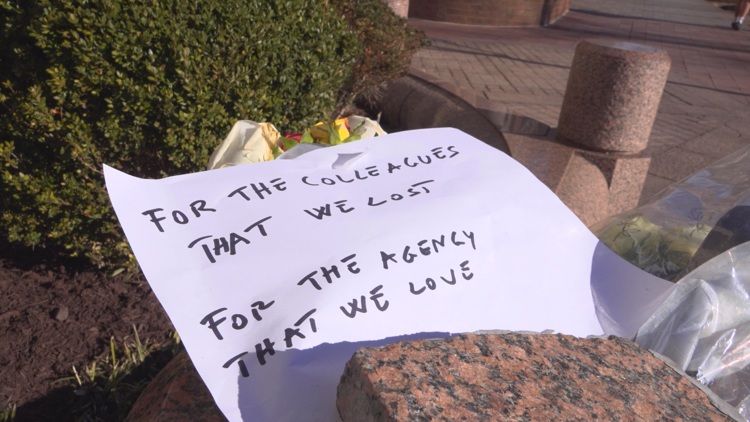

One fired young scientist called his assignment to protect U.S. fisheries “patriotic.”
SILVER SPRING, Md. — A bouquet of flowers and a note were left in front of the headquarters of the National Oceanic and Atmospheric Administration (NOAA) in Silver Spring on Friday after mass firings targeted at least 800 of the agency’s employees.
The note read: “For the colleagues we lost – for the agency we love.”
NOAA is the sprawling agency responsible for the National Weather Service, climate research, and fisheries management. It is now in turmoil after a sweeping round of firings that has left employees, industry experts, and policymakers deeply concerned.
The cuts, which affected hundreds of employees—including senior scientists and directors of critical climate monitoring programs—are widely seen as the first steps toward dismantling the $12 billion agency. The move comes after NOAA was singled out in the Heritage Foundation’s Project 2025 document, which called it “one of the main drivers of the climate change alarm industry” and advocated for privatizing weather forecasting.
Among the 800 dismissed was Jonathan Nash, a 23-year-old marine scientist and former teacher. Nash, who had dreamed of working in marine science since childhood fishing trips with his grandparents, described the layoffs as a devastating blow not just to employees but to the country’s ability to protect its coastlines and fisheries.
“I really don’t see any better way to be a patriot than protecting our coastlines and commercial fisheries,” Nash said. “In 2018, fisheries accounted for about $5.6 billion of our economy. We’re just trying to do our best to protect resources that are running out. These things are not renewable—it’s either protect them now or regret losing them later.”
NOAA’s climate monitoring programs provide the world’s most comprehensive baseline data on atmospheric CO2 levels and rising sea levels—data that insurance companies, banks, and agricultural industries rely on to assess climate risks. With NOAA’s leadership in climate science suddenly gutted, experts fear that the availability and reliability of this crucial data could be compromised.
“Eliminating these scientists weakens not just NOAA, but industries across the country that depend on accurate environmental data for planning and risk management,” said an industry analyst who spoke on the condition of anonymity. “From farming to real estate, finance to emergency preparedness, these cuts put billions of dollars of investment at risk.”
One of the most controversial proposals in Project 2025 is the privatization of the National Weather Service. If implemented, it could mean that Americans would have to pay for weather forecasts that are currently available to the public at no cost. Critics warn that this could particularly impact rural and underserved communities that rely on free government-provided weather alerts for storm tracking and emergency preparedness.
Friday, Sen. Chris Van Hollen (D-Maryland) called the layoffs “reckless” and warned that defunding NOAA could endanger public safety, emergency response efforts, and commercial industries like fishing and aviation.
“These cuts aren’t about efficiency—they’re about weakening the nation’s ability to respond to extreme weather, rising seas, and environmental hazards,” Van Hollen said in a statement. “Privatizing the National Weather Service would force Americans to pay for essential information, putting lives and livelihoods at risk.”
Critics argue that the firings were politically motivated rather than grounded in scientific or economic reasoning. Some fear the move is an attempt to sideline climate science in favor of policies that prioritize short-term economic gains over long-term environmental stability.
“These cuts threaten U.S. leadership in global scientific research, ocean mapping, climate modeling, and space weather monitoring,” said a former NOAA official. “If we lose our ability to track changes in our environment, we lose our ability to respond effectively. The economic and environmental consequences could be catastrophic.”


